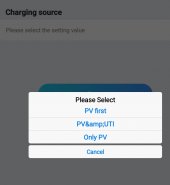I have released the new version:
If you find this useful please Please do not post in this thread, it is for version release info, please create your own or use #1 Will try to keep this thread updated with latest version improveme...

github.com
V1.11 4/12/22
Tested on ESPHome Version: 2022.11.4, upgrade by running "pip3 install -U esphome"
Complete rework of the charging logic, now charges with constant current(CC) to the absorption voltage, then has an absorption timer (Constant Voltage, user configurable time), with rebulk feature (user configurable offset from absorption voltage).
Live sliders for absorption voltage and charging current (can change on the fly!)
Charging status user feedback to let you know what the charging logic is doing. Bulk, Absorption, Wait , Disabled, etc
Reworked the Charge/Discharge controls and logic, so more user friendly (default to on as below).
- Battery control switches to manage battery remotely
- Charging request status
- Absorption voltage (slider)
- Charging current max (slider)
- Charging enabled/disabled
- Discharging enabled/disabled
- Charging manually (top balancing)



